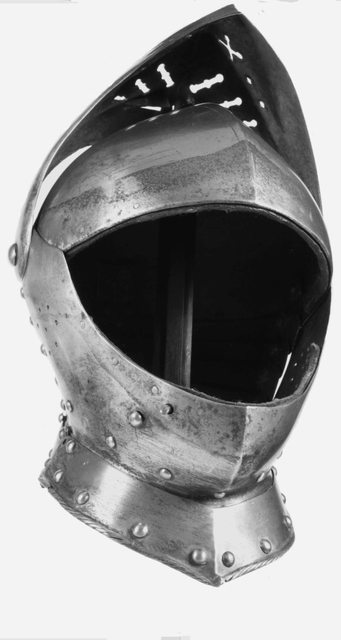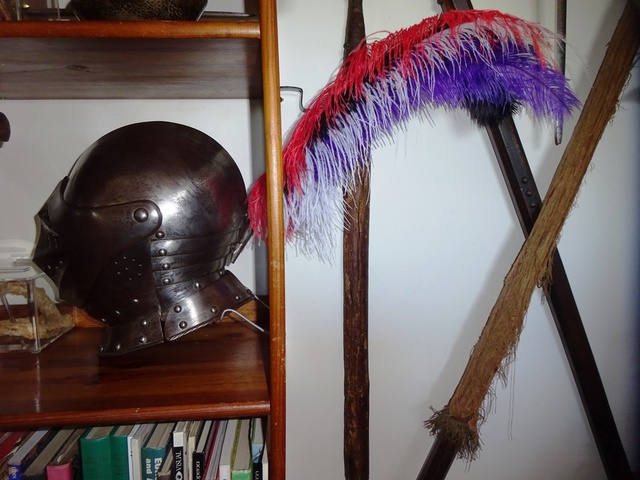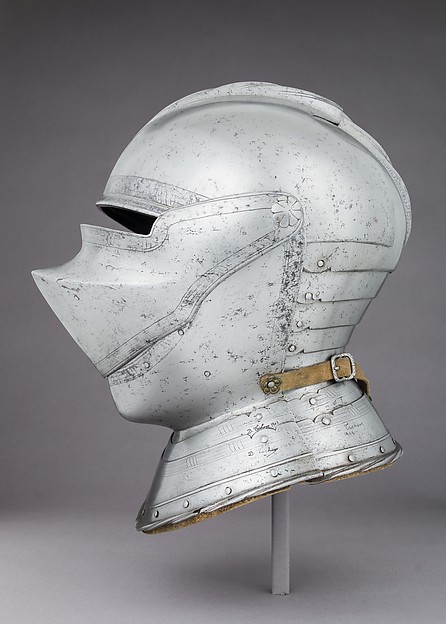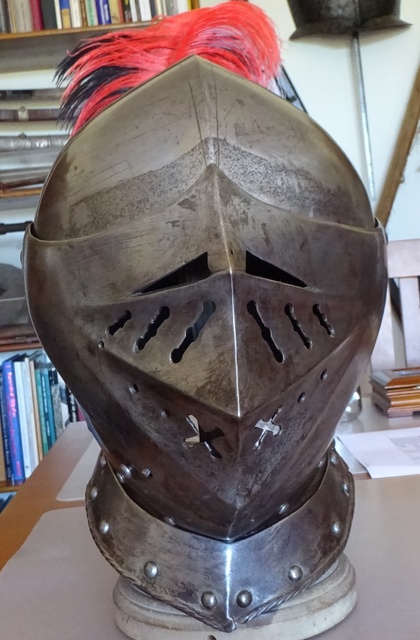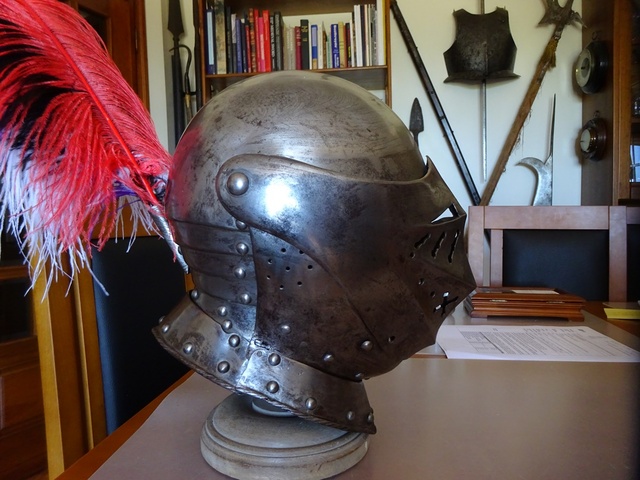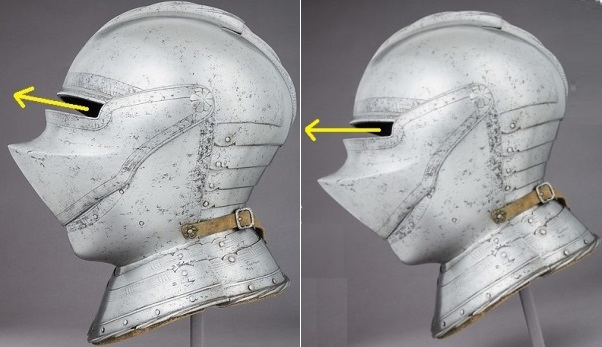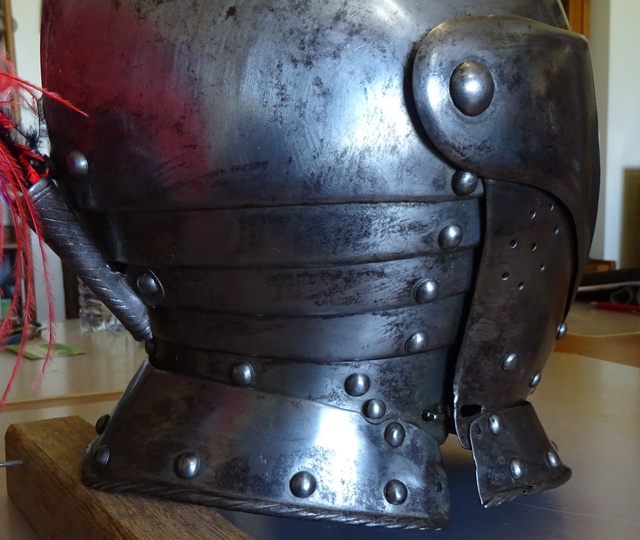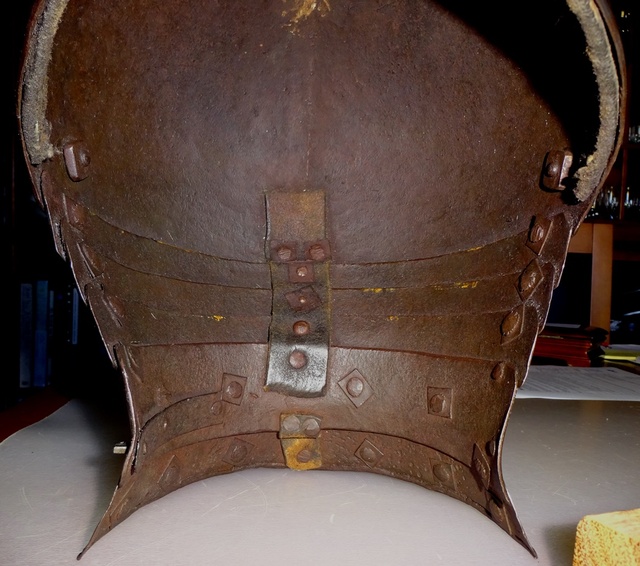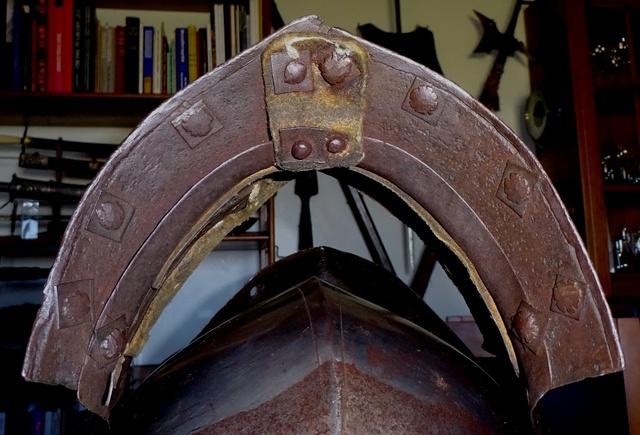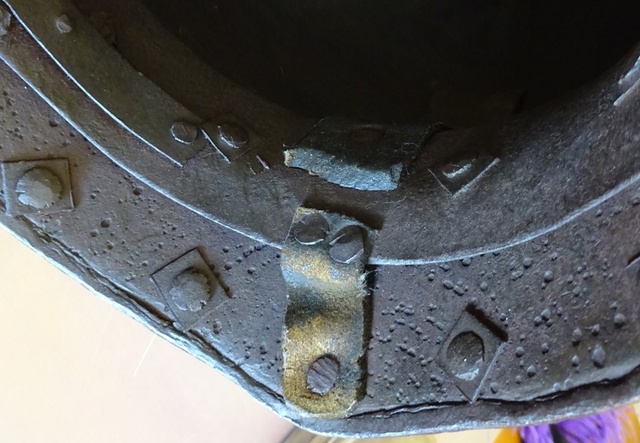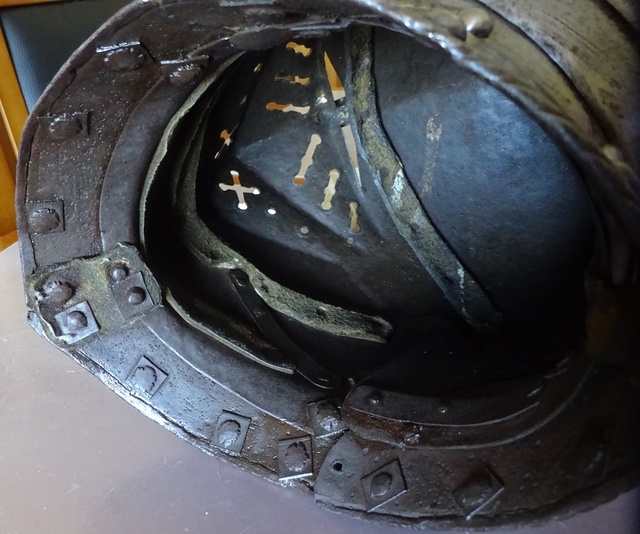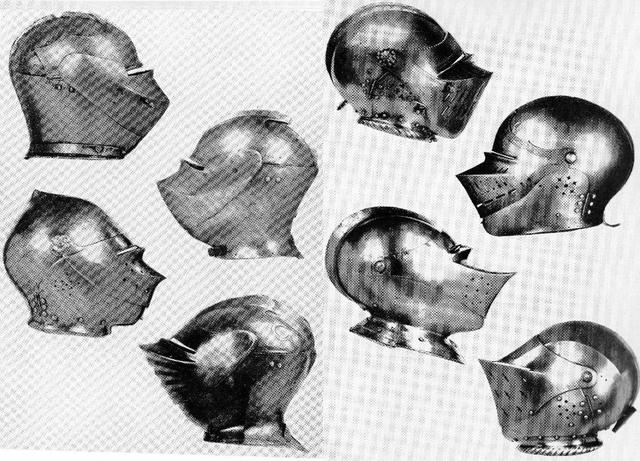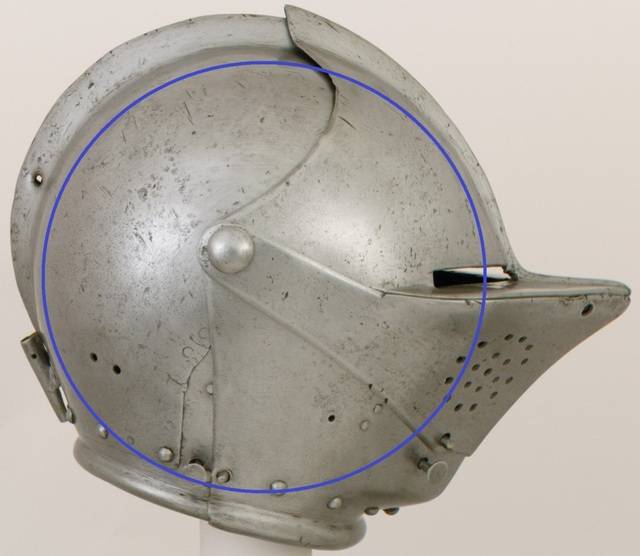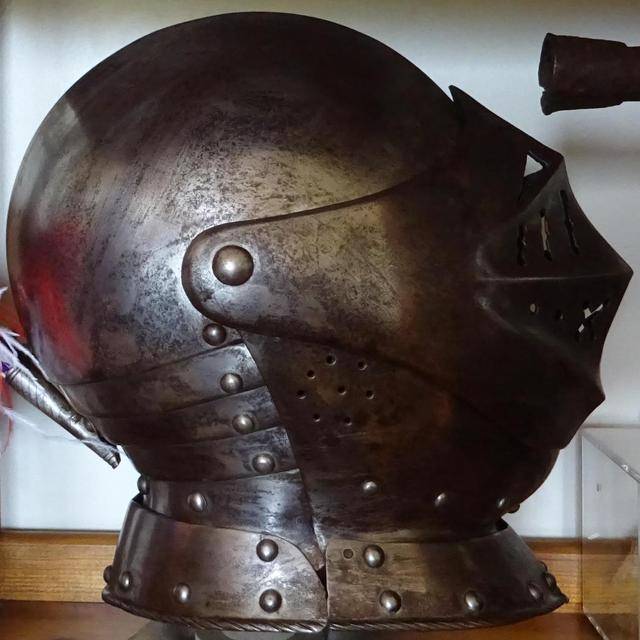I am less than a newbie in this subject; therefore i am not able to distinguish an armet from a close helmet, despite my efforts to figure it out, from what i read about this.
If i am to consider that the main difference between both is the bevor, in that the armet splits in the middle, the two halves opening outwards, whereas in a close helmet the bevor is in one piece and shares the same pivot point with the visor, opening by swinging upwards, i face a dilemma.
In the attached example, i was told that it is an armet, while its bevor is an entire piece and rotates upwards like a close helmet is supposed to be. Is it that this is an exception to the rule, taking into consideration other parts, like the one piece visor, or the articulated neck lames... meaning that this would be a composite, and not a true either style ?
Any help would be greatly appreciated.
Fernando.
.

